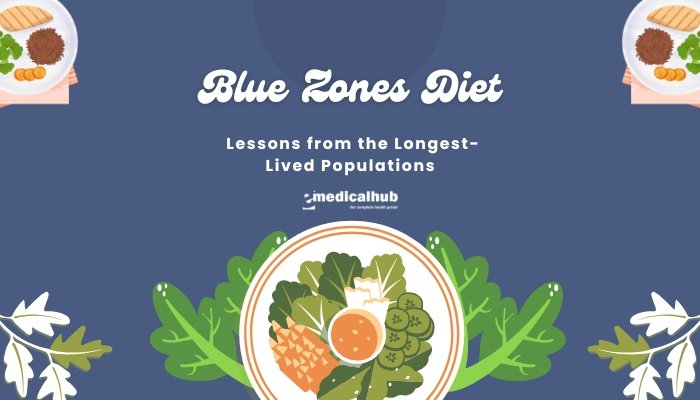Introduction
The term “superfood” has exploded in popularity, used to describe certain nutrient-dense foods believed to provide a range of health benefits. While the label can sometimes be more marketing buzz than hard science, certain foods do stand out for their concentration of vitamins, antioxidants, or anti-inflammatory compounds.
Three items often hailed as superfoods — acai, matcha, and turmeric — have garnered significant attention in recent years and remain on trend for 2024. You’ll find them in everything from smoothie bowls and latte blends to functional snack bars and beauty products.
But are these superfoods truly “miracle ingredients,” or are we simply seeing well-marketed exotic plants and spices with modest, albeit genuine, benefits? This article takes a closer look at acai, matcha, and turmeric — where they come from, the science behind their purported health advantages, potential side effects, and how you can incorporate them into a balanced diet.
While they’re not cure-alls, they can certainly enhance variety and nutrient density in your meals, provided you maintain realistic expectations.
Disclaimer: This information is for educational purposes only and is not a substitute for medical advice. For personalized health or dietary concerns, consult a qualified healthcare professional.
Understanding the “Superfood” Concept
What Qualifies as a Superfood?
Superfoods typically refer to foods high in vitamins, minerals, antioxidants, or other compounds believed to promote health. The term, however, is not scientifically regulated; marketing often drives usage more than strict criteria. Still, many so-called superfoods like blueberries, kale, and quinoa are indeed quite nutritious.
Why Certain Foods Gain Popularity
- Exotic Origins: Ingredients from distant locales (e.g., Amazonian acai, ceremonial Japanese matcha) can feel more intriguing or “authentic.”
- Celebrity Endorsement: Influencers tout them in social media, fueling interest.
- Branding as Functional: Phrases like “energizing” or “immune-boosting” resonate with consumers seeking quick health fixes.
While many superfoods deliver genuinely robust nutrient profiles, it’s vital to remember that no single food can compensate for an otherwise unhealthy lifestyle or poor overall diet.
Acai: The Amazonian Berry
Origin and Characteristics
Acai (ah-sigh-EE) is a small, dark-purple berry harvested from the acai palm tree primarily in the Amazon region of Brazil. Over the last decade, it’s become ubiquitous in smoothie bowls and juices worldwide. Often sold as a frozen puree, powder, or in juice form, raw fresh acai is perishable and seldom exported widely.
Nutritional Profile
- Antioxidants: Acai is rich in anthocyanins (the pigments giving it that deep purple hue), which may help reduce oxidative stress.
- Healthy Fats: Unusual for a berry, acai contains some beneficial fats like oleic acid.
- Fiber: Offers moderate fiber content, supporting digestion.
However, these beneficial compounds appear in many other fruits and vegetables, so acai’s nutritional advantage is not exclusive.
Potential Health Benefits
- Antioxidant Support: Some studies rank acai high on the ORAC (oxygen radical absorbance capacity) scale, suggesting it can help scavenge free radicals.
- Heart Health: Limited data suggests the polyphenols in acai might support healthy cholesterol levels.
- Anti-Inflammatory: The anthocyanins and other compounds could have mild anti-inflammatory effects, though more research is needed.
Considerations and Usage
- Sweeteners: Many acai products add sugar, so check labels. Pure, unsweetened acai pulp or powder is recommended.
- Cost: Acai can be more expensive than local berries. If budget is a concern, you can find other antioxidant-rich produce (e.g., blueberries, blackberries).
- Serving Ideas: Acai bowls (blending frozen acai, banana, and perhaps some non-dairy milk) topped with fresh fruit or granola. Also used in smoothies or homemade popsicles.
Verdict: Acai is nutrient-dense and can be a delicious part of a varied diet. Just be mindful of sweeteners and keep expectations realistic—acai alone won’t drastically alter health, but it can add beneficial antioxidants to your routine.
Matcha: Ceremonial Green Tea Powder
What Is Matcha?
Matcha is a finely ground powder of specially grown green tea leaves from Japan. Farmers shade the tea plants several weeks before harvest, boosting chlorophyll and amino acid content. After picking, the leaves are steamed, dried, and ground into a vibrant, jade-green powder. Matcha’s use in Japanese tea ceremonies dates back centuries, though it has exploded globally in cafés and wellness circles.
Nutritional and Chemical Composition
- High in Antioxidants: Specifically epigallocatechin gallate (EGCG), a catechin known for potential anti-inflammatory and anti-carcinogenic properties.
- L-Theanine: An amino acid that can promote relaxation and offset caffeine’s jittery effects, possibly enhancing focus.
- Caffeine: Matcha contains moderate caffeine, less than coffee but more than typical green tea (since you consume the leaf itself, not just a brew).
Potential Health Benefits
- Enhanced Cognitive Function: The synergy of caffeine + L-theanine may help maintain alertness without intense jitters, leading to calmer concentration.
- Weight Management: Green tea catechins might slightly boost metabolic rate or fat oxidation, though it’s no magic bullet.
- Heart Health: Some studies link green tea consumption with lower risks of hypertension or improved cholesterol profiles.
Handling and Precautions
- Quality Matters: Ceremonial-grade matcha can be expensive, but typically has superior taste and nutrient profile.
- Moderation: A few cups daily is generally safe. Excessive consumption can lead to caffeine overload or GI upset.
- Potential Interactions: If you’re sensitive to caffeine or on certain medications, consult a professional.
- Preparation Tip: Whisk a teaspoon of matcha powder in hot (not boiling) water to keep it from turning bitter.
Verdict: If you enjoy green tea flavor and want a mild mental boost, matcha can be a welcome addition. Its antioxidants might offer certain health perks, and mindful consumption is key for maximizing benefits.
Turmeric: The Golden Spice
Background and Curcumin Content
Turmeric, a bright orange-yellow spice, is derived from the root of the Curcuma longa plant, used in Indian and Southeast Asian cooking. Its primary active compound, curcumin, is responsible for the signature color and many of the spice’s reported health properties.
Proposed Health Benefits
- Anti-Inflammatory Action: Curcumin can inhibit certain inflammatory pathways, beneficial for conditions like arthritis or inflammatory bowel diseases.
- Antioxidant Effects: May help neutralize free radicals, supporting cellular health.
- Digestive Support: Traditional uses suggest aiding digestion, though robust clinical data is limited.
Bioavailability Challenges
One major hurdle is curcumin’s poor absorption in the human body:
- Adding Black Pepper (piperine) significantly increases curcumin absorption.
- Pairing with Fat might help solubility.
- Formulated Supplements: Some capsules use advanced technology (phospholipid complexes, nanoemulsions) for better bioavailability.
Culinary and Supplement Options
- Cooking: Use turmeric in curries, soups, or golden milk. Combine with pepper and healthy fats (like coconut milk) for best absorption.
- Golden Milk: A latte-like beverage with turmeric, black pepper, ginger, and sometimes coconut milk or almond milk.
- Capsules: For therapeutic dosing, people often rely on concentrated curcumin supplements. Consulting a healthcare provider is recommended if addressing specific inflammatory conditions.
Verdict: Turmeric’s benefits are well-studied, but actual results hinge on consistent intake and ensuring enhanced bioavailability. Culinary usage is a tasty route to harness some anti-inflammatory potential.
Do Superfoods Replace a Balanced Diet?
Regardless of how nutrient-rich acai, matcha, or turmeric are, they aren’t cure-alls:
- Holistic Approach: Real health improvements usually require an overall healthy pattern—plenty of fruits, vegetables, whole grains, lean proteins or legumes, and healthy fats.
- Portion Control: Overloading on superfoods while ignoring basic macronutrient balance or calorie intake can hamper goals (like weight management).
- Lifestyle Components: Enough sleep, exercise, stress management, hydration, and moderation in harmful habits remain essential.
In other words, these superfoods complement but do not replace a well-rounded nutritional approach.
Potential Side Effects and Precautions
Allergies and Sensitivities
- Acai: Rare allergic reactions, but possible.
- Matcha: Excess caffeine can cause insomnia, irritability, or heart palpitations if consumed in large amounts.
- Turmeric: High doses may cause stomach upset or interact with blood thinners (due to curcumin’s mild anticoagulant effect).
Potential Interactions with Medications
- Matcha + Blood Pressure/Heart Medications: Caffeine can hamper or amplify effects.
- Turmeric + Anticoagulants: Could enhance bleeding risk.
- High-Antioxidant Foods + Chemotherapy: Some oncology guidelines caution about large amounts of antioxidants interfering with treatment, though evidence is mixed.
Pregnancy and Breastfeeding
Data on safety for large doses of these superfoods in pregnancy is incomplete. Occasional normal dietary usage is usually fine, but pregnant individuals should consult a doctor before supplementing heavily with curcumin or matcha extracts.
Integrating These Superfoods into Your Diet
Acai Usage
- Smoothie Bowls: Blend unsweetened acai pulp with bananas or other fruits for a thick smoothie topped with granola or seeds.
- Juices and Sorbets: Choose low-sugar options if possible.
- Snacks: Freeze-dried acai powder can be added to oatmeal or energy balls.
Matcha Creations
- Matcha Latte: Whisk matcha powder with hot water, then add frothed milk (dairy or plant-based).
- Baking: Incorporate matcha into pancakes, muffins, or cookies for a green hue and mild flavor.
- Savory: Some adventurous cooks use matcha in salad dressings or marinade rubs.
Turmeric Inspiration
- Golden Milk: Simmer turmeric, black pepper, and ginger in milk (dairy or plant-based), sweeten lightly.
- Curries and Stir-Fries: Add a teaspoon or so for color and flavor. Pair with black pepper.
- Soup Boost: Mix into vegetable or lentil soups. A small pinch can go a long way.
Real-World Examples: Are They Worth the Hype?
Acai: Balanced or Overrated?
- Pros: Tasty, antioxidant-dense, a nice alternative to other berries.
- Cons: Expensive, often sugar-laden in commercial bowls. A good, occasional add-on, not mandatory for health if you regularly eat local berries.
Matcha: Zen or Just Trendy?
- Pros: Catechin-rich, can offer mental alertness with calmer energy than coffee for many.
- Cons: Costly high-grade matcha; might be bitter for some palates. Overall, a beneficial tea alternative if you enjoy the flavor.
Turmeric: Golden Spice Gains
- Pros: Solid anti-inflammatory potential, widely studied.
- Cons: Must pay attention to black pepper synergy and realistic dosage. Overdosing or expecting cure-all results leads to disappointment.
Bottom line: Incorporating these superfoods can provide variety and certain nutrients, but they complement rather than overshadow the fundamentals of a balanced, predominantly whole-food diet.
Frequently Asked Questions (FAQ)
Is it better to have fresh turmeric root or powdered?
Both forms contain curcumin. Fresh root might have slightly more flavor and phytonutrients, but the convenience of powder is appealing. Just ensure you add black pepper or fat for better absorption.
Can I drink matcha at night if I’m caffeine-sensitive?
Matcha still contains caffeine (about half that of coffee per cup), so it might disrupt sleep if you’re sensitive. Try decaf green tea or limit matcha intake to earlier in the day.
Which is better for antioxidants, acai or blueberries?
Both are high in antioxidants, each with unique phytonutrient profiles. They’re roughly comparable in many respects, so you can incorporate both without feeling the need to pick a “winner.”
Are superfood powders like “acai powder” or “turmeric capsules” as good as whole foods?
They can offer concentrated forms of certain compounds. However, fiber and some micronutrients may be higher in the whole forms. Choose reputable brands to avoid adulterants or misleading claims.
Do these superfoods boost immunity?
A robust immune system depends on an overall healthy diet, adequate rest, exercise, and minimal stress. Superfoods can complement but not wholly “boost” immunity on their own.
Conclusion
Acai, matcha, and turmeric exemplify the fascination with superfoods that promise unique health advantages. Each, indeed, contains beneficial nutrients—acai is loaded with antioxidants, matcha brims with polyphenols and calming L-theanine, and turmeric’s curcumin exhibits notable anti-inflammatory actions. However, it’s important to approach them as components of a varied, balanced diet rather than quick-fix magic bullets. Real, long-term health results from synergy: emphasizing whole, nutrient-dense foods, consistent activity, good sleep, and stress management.
If you enjoy the taste and can afford them, these superfoods can be wonderful additions, offering variety and subtle benefits. For instance, adding acai to your smoothies, sipping a morning matcha latte, or using turmeric in daily cooking can be a pleasurable and health-conscious habit. Just remain aware of factors like possible added sugars in acai bowls, caffeine in matcha, and the need for black pepper to enhance turmeric absorption. Ultimately, the “hype” around these superfoods is partly deserved—but remember that no single food stands above the importance of an overall healthy lifestyle.
References
- Hernaez A, et al. Fruit and vegetable consumption and their roles in the prevention of non-communicable diseases. Nutr Rev. 2015;73(6):401-417.
- Schauss AG, et al. Antioxidant capacity and other bioactivities of the freeze-dried amazonian palm berry, Euterpe oleracea Mart. (Acai). J Agric Food Chem. 2006;54(22):8604-10.
- Huo J, Liu J, Ma L, et al. Effects of green tea and tea polyphenols on cognition and brain function. J Nutr Biochem. 2021;96:108758.
- Nishikawa H, Shibata T, Goto M, et al. Catechins and the gut microbiota. J Funct Foods. 2019;57:53-58.
- Hewlings SJ, Kalman DS. Curcumin: A review of its effects on human health. Foods. 2017;6(10):92.
- Gupta SC, Patchva S, Koh W, et al. Discovery of curcumin, a component of golden spice, and its miraculous biological activities. Clin Exp Pharmacol Physiol. 2012;39(3):283-99.
- Monsalve B, et al. Impact of piperine in the bioavailability of curcumin. Planta Med. 2012;78(11).
- Bondonno NP, Bondonno CP, Ward NC, et al. The cardiovascular health benefits of apples: Whole fruit vs. isolated compounds. Food Funct. 2017;8(2):710-719.
- Williamson G. The role of polyphenols in modern nutrition. Nutr Bull. 2017;42(3):226-235.
- Tungmunnithum D, Thongboonyou A, Pholboon A, et al. Flavonoids and other phenolic compounds from medicinal plants for pharmaceutical and medical aspects: An overview. Medicines. 2018;5(3):93.
- NIH Office of Dietary Supplements. Curcumin: Fact Sheet for Health Professionals. 2022.
- Cardoso LO, et al. Characterization of polyphenols in the Amazonian fruit açaí and its antioxidant capacity. Food Res Int. 2012;44(7):2121-31.






